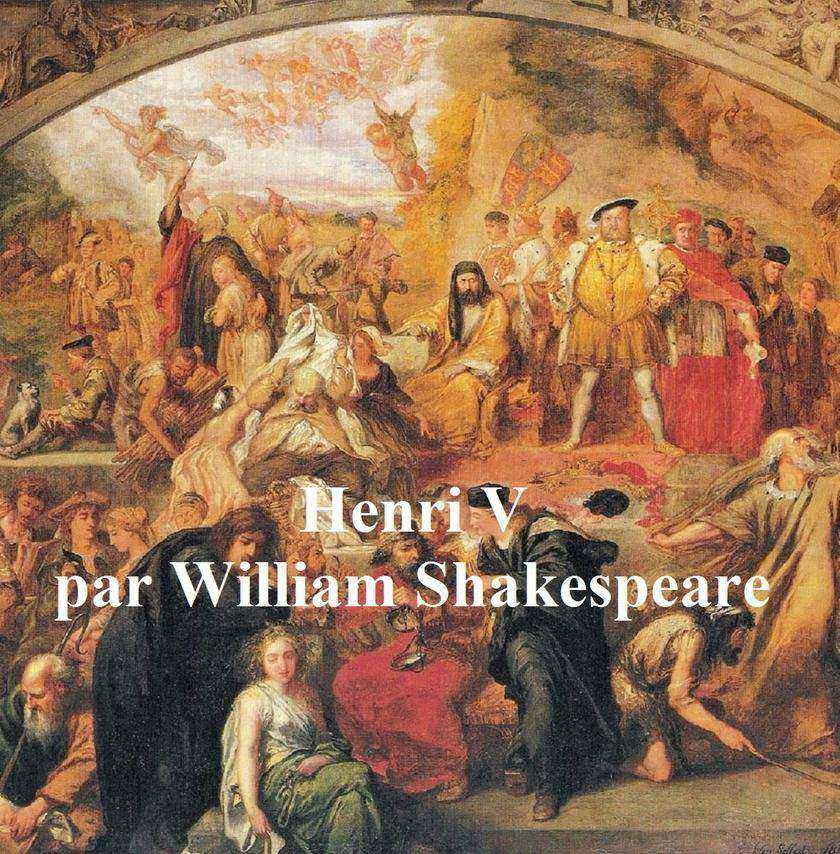
Henry V in French
¥8.09
Pièce d'histoire de Shakespeare, Henry V, en traduction fran?aise. Selon Wikipédia: "Henry V est une pièce d'histoire de William Shakespeare, dont on pense qu'elle a été écrite vers 1599. Ses titres complets sont The Cronicle History of Henri Quint (dans le texte du premier quarto) et The Life of Henry the Fifth (dans le premier texte du Folio) raconte l'histoire du roi Henry V d'Angleterre, en se concentrant sur les événements qui ont précédé et suivi la bataille d'Azincourt (1415) pendant la guerre de Cent Ans.
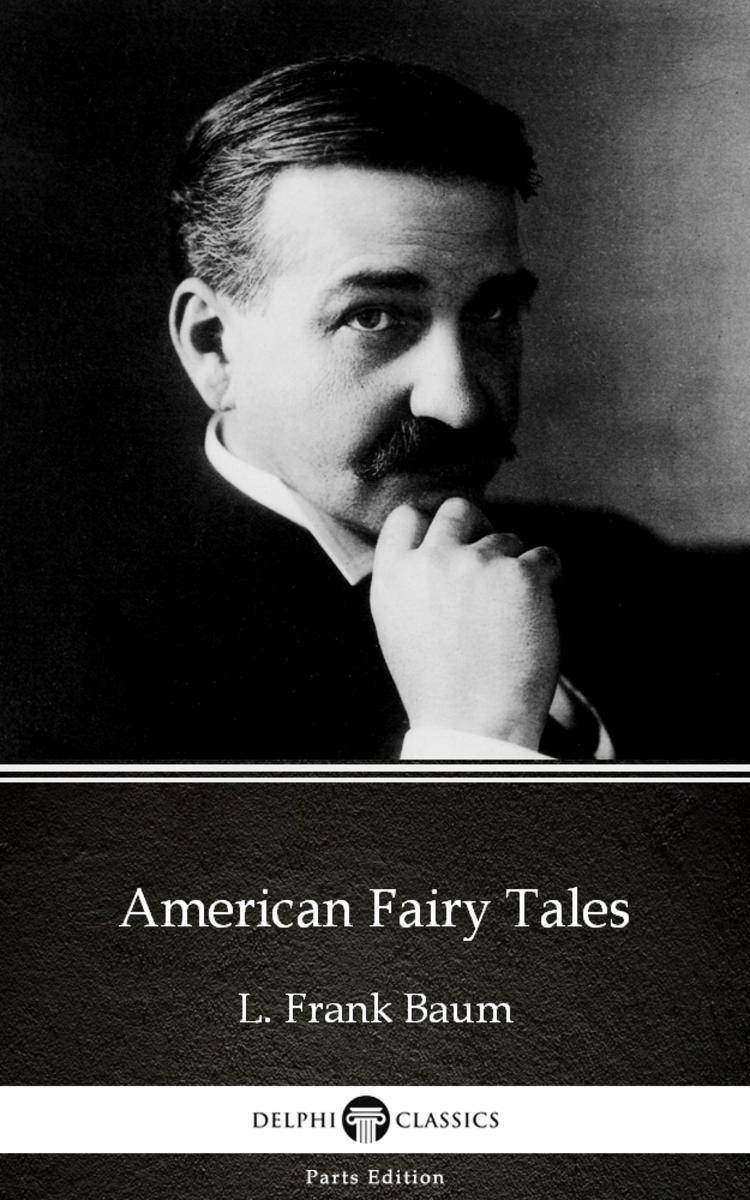
American Fairy Tales by L. Frank Baum - Delphi Classics (Illustrated)
¥8.09
This eBook features the unabridged text of ‘American Fairy Tales by L. Frank Baum - Delphi Classics (Illustrated)’ from the bestselling edition of ‘The Complete Works of L. Frank Baum’. Having established their name as the leading publisher of classic literature and art, Delphi Classics produce publications that are individually crafted with superior formatting, while introducing many rare texts for the first time in digital print. The Delphi Classics edition of Baum includes original annotations and illustrations relating to the life and works of the author, as well as individual tables of contents, allowing you to navigate eBooks quickly and easily. eBook features: * The complete unabridged text of ‘American Fairy Tales by L. Frank Baum - Delphi Classics (Illustrated)’ * Beautifully illustrated with images related to Baum’s works * Individual contents table, allowing easy navigation around the eBook * Excellent formatting of the text Please visit www.delphiclassics.com to learn more about our wide range of titles
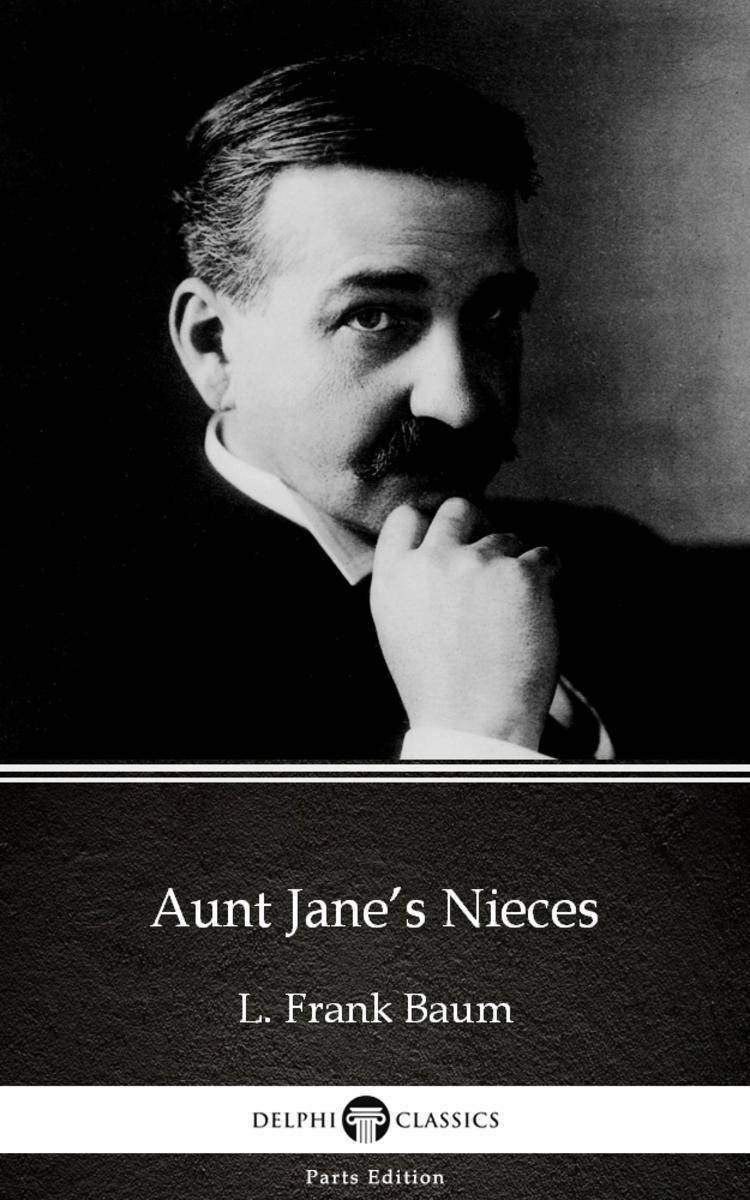
Aunt Jane’s Nieces by L. Frank Baum - Delphi Classics (Illustrated)
¥8.09
This eBook features the unabridged text of ‘Aunt Jane’s Nieces by L. Frank Baum - Delphi Classics (Illustrated)’ from the bestselling edition of ‘The Complete Works of L. Frank Baum’. Having established their name as the leading publisher of classic literature and art, Delphi Classics produce publications that are individually crafted with superior formatting, while introducing many rare texts for the first time in digital print. The Delphi Classics edition of Baum includes original annotations and illustrations relating to the life and works of the author, as well as individual tables of contents, allowing you to navigate eBooks quickly and easily. eBook features: * The complete unabridged text of ‘Aunt Jane’s Nieces by L. Frank Baum - Delphi Classics (Illustrated)’ * Beautifully illustrated with images related to Baum’s works * Individual contents table, allowing easy navigation around the eBook * Excellent formatting of the text Please visit www.delphiclassics.com to learn more about our wide range of titles

The Boy Fortune Hunters in Panama by L. Frank Baum - Delphi Classics (Illustrate
¥8.09
This eBook features the unabridged text of ‘The Boy Fortune Hunters in Panama by L. Frank Baum - Delphi Classics (Illustrated)’ from the bestselling edition of ‘The Complete Works of L. Frank Baum’. Having established their name as the leading publisher of classic literature and art, Delphi Classics produce publications that are individually crafted with superior formatting, while introducing many rare texts for the first time in digital print. The Delphi Classics edition of Baum includes original annotations and illustrations relating to the life and works of the author, as well as individual tables of contents, allowing you to navigate eBooks quickly and easily. eBook features: * The complete unabridged text of ‘The Boy Fortune Hunters in Panama by L. Frank Baum - Delphi Classics (Illustrated)’ * Beautifully illustrated with images related to Baum’s works * Individual contents table, allowing easy navigation around the eBook * Excellent formatting of the text Please visit www.delphiclassics.com to learn more about our wide range of titles
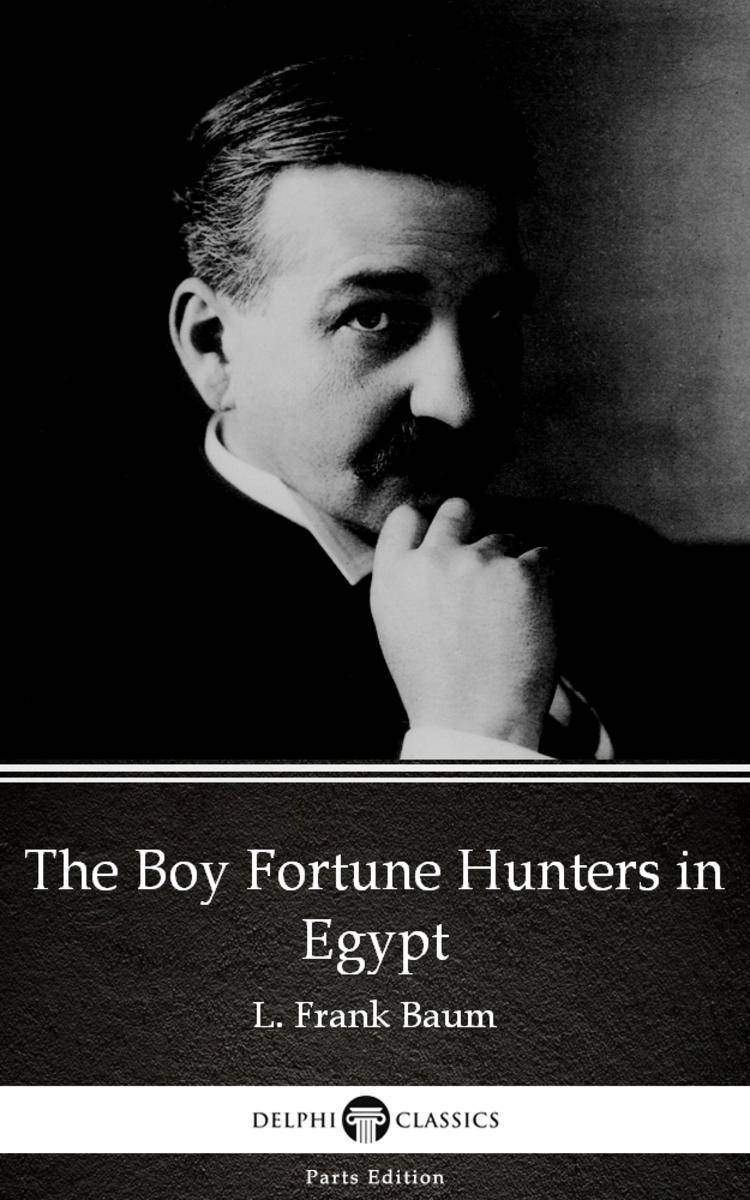
The Boy Fortune Hunters in Egypt by L. Frank Baum - Delphi Classics (Illustrated
¥8.09
This eBook features the unabridged text of ‘The Boy Fortune Hunters in Egypt by L. Frank Baum - Delphi Classics (Illustrated)’ from the bestselling edition of ‘The Complete Works of L. Frank Baum’. Having established their name as the leading publisher of classic literature and art, Delphi Classics produce publications that are individually crafted with superior formatting, while introducing many rare texts for the first time in digital print. The Delphi Classics edition of Baum includes original annotations and illustrations relating to the life and works of the author, as well as individual tables of contents, allowing you to navigate eBooks quickly and easily. eBook features: * The complete unabridged text of ‘The Boy Fortune Hunters in Egypt by L. Frank Baum - Delphi Classics (Illustrated)’ * Beautifully illustrated with images related to Baum’s works * Individual contents table, allowing easy navigation around the eBook * Excellent formatting of the text Please visit www.delphiclassics.com to learn more about our wide range of titles
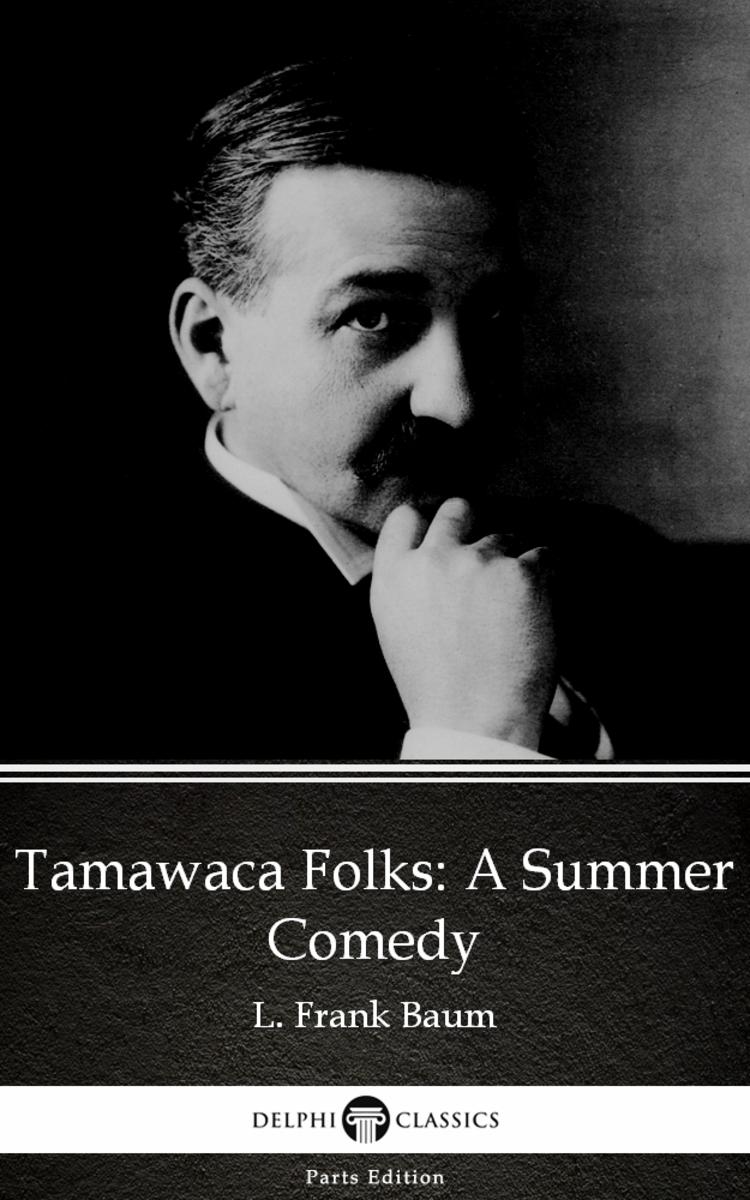
Tamawaca Folks A Summer Comedy by L. Frank Baum - Delphi Classics (Illustrated)
¥8.09
This eBook features the unabridged text of ‘Tamawaca Folks A Summer Comedy by L. Frank Baum - Delphi Classics (Illustrated)’ from the bestselling edition of ‘The Complete Works of L. Frank Baum’. Having established their name as the leading publisher of classic literature and art, Delphi Classics produce publications that are individually crafted with superior formatting, while introducing many rare texts for the first time in digital print. The Delphi Classics edition of Baum includes original annotations and illustrations relating to the life and works of the author, as well as individual tables of contents, allowing you to navigate eBooks quickly and easily. eBook features: * The complete unabridged text of ‘Tamawaca Folks A Summer Comedy by L. Frank Baum - Delphi Classics (Illustrated)’ * Beautifully illustrated with images related to Baum’s works * Individual contents table, allowing easy navigation around the eBook * Excellent formatting of the text Please visit www.delphiclassics.com to learn more about our wide range of titles

The King of the Dark Chamber
¥8.09
According to Wikipedia: "Rabindranath Tagore (7 May 1861 – 7 August 1941), sobriquet Gurudev, was a Bengali poet, novelist, musician, painter and playwright who reshaped Bengali literature and music. As author of Gitanjali and its "profoundly sensitive, fresh and beautiful verse", he was the first non-European who was awarded the Nobel Prize for Literature in 1913. His poetry in translation was viewed as spiritual, and this together with his mesmerizing persona gave him a prophet-like aura in the west. His "elegant prose and magical poetry" still remain largely unknown outside the confines of Bengal."

King John/ Leben und Tod des Konigs Johann: Bilingual edition
¥8.09
Bilingual, English and German. Shakespeare history play King John, in English with line numbers and in German translation. According to Wikipedia: "The Life and Death of King John, a history play by William Shakespeare, dramatises the reign of John, King of England (ruled 1199–1216), son of Henry II of England and Eleanor of Aquitaine and father of Henry III of England. It is believed to have been written in the mid-1590s but was not published until it appeared in the First Folio in 1623." Zweisprachig, Englisch und Deutsch. Shakespeare Geschichte spielen King John, in Englisch mit Zeilennummern und in deutscher ?bersetzung. Laut Wikipedia: "Das Leben und der Tod von K?nig John, ein Geschichtsstück von William Shakespeare, dramatisiert die Herrschaft von John, K?nig von England (regierte 1199-1216), Sohn von Heinrich II. Von England und Eleonore von Aquitanien und Vater von Henry Es wird angenommen, dass es in der Mitte der 1590er Jahre geschrieben wurde, aber nicht ver?ffentlicht wurde, bis es im Ersten Folio 1623 erschien.

The Seven Plays of Sophocles
¥8.09
This file includes the English verse translation by Lewis Campbell of all seven extant Sophocles plays: Antigone, Aias. King Oedipus, Electra, The Tracinian Maidens, Philoctetes, and Oedippus at Colonos. According to Wikipedia: "Sophocles( c. 496 BC-406 BC) was the second of the three ancient Greek tragedians whose work has survived. His first plays were written later than those of Aeschylus and earlier than those of Euripides. According to the Suda, a 10th century encyclopedia, Sophocles wrote 123 plays during the course of his life, but only seven have survived in a complete form... The most famous of Sophocles' tragedies are those concerning Oedipus and Antigone: these are often known as the Theban plays, although each play was actually a part of different tetralogy, the other members of which are now lost. Sophocles influenced the development of the drama, most importantly by adding a third actor and thereby reducing the importance of the chorus in the presentation of the plot."

Three Books of Poetry and Two Plays
¥8.09
This file includes the short poetry collections A Few Figs from Thistles, Renascence and Other Poems, and Second April. It also includes the plays Aria da Capo (one act) and The Lamp and The Bell (five acts). According to Wikipedia: "Edna St. Vincent Millay (February 22, 1892 – October 19, 1950) was an American lyrical poet and playwright and the first woman to receive the Pulitzer Prize for Poetry. She was also known for her unconventional, bohemian lifestyle and her many love affairs. She used the pseudonym Nancy Boyd for her prose work."

The Odes of Pindar
¥8.09
This translation first published in 1874. According to Wikipedia: "Pindar (c. 522–443 BC), was an Ancient Greek lyric poet from Thebes. Of the canonical nine lyric poets of ancient Greece, his work is the best preserved. Quintilian wrote, "Of the nine lyric poets, Pindar is by far the greatest, in virtue of his inspired magnificence, the beauty of his thoughts and figures, the rich exuberance of his language and matter, and his rolling flood of eloquence, characteristics which, as Horace rightly held, make him inimitable." His poems however can also seem difficult and even peculiar... his style still challenges the casual reader and he continues to be a much admired though largely unread poet."
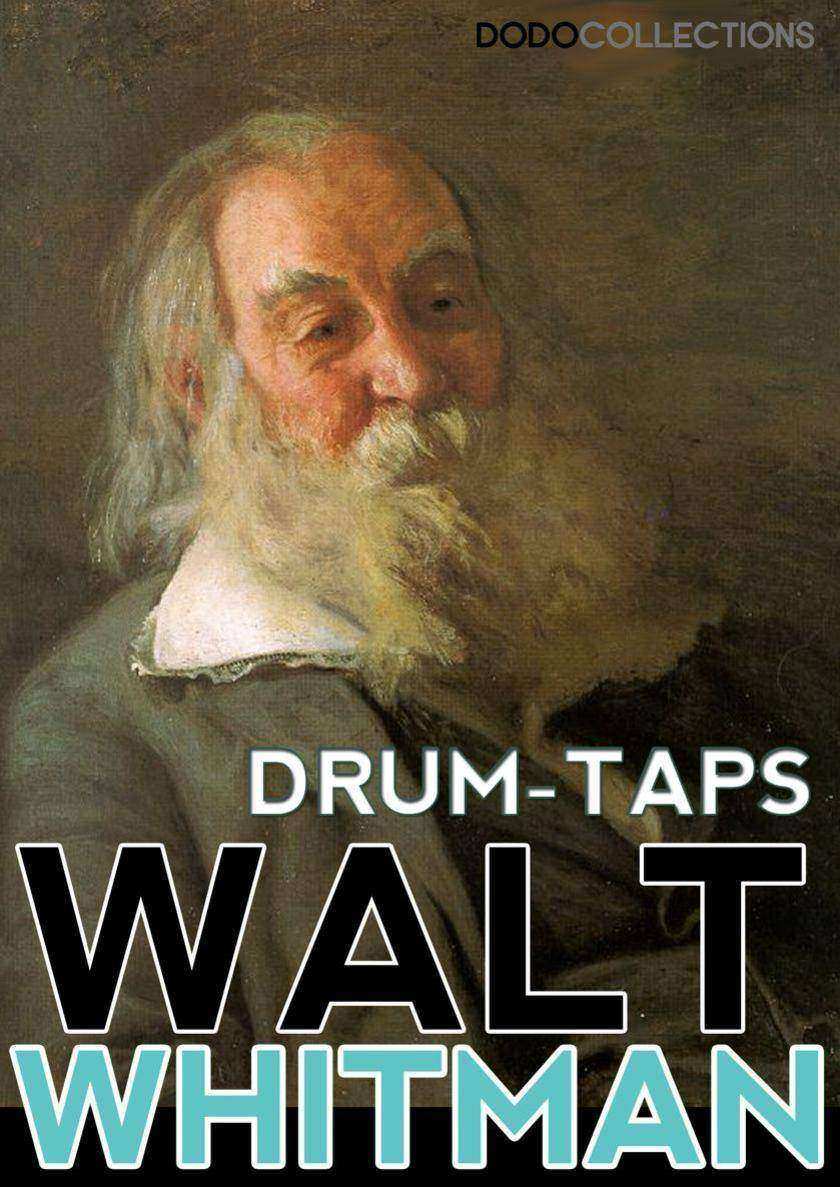
Drum-Taps
¥8.09
Dodo Collections brings you another classic from Walt Whitman, ‘Drum-Taps’. Drum-taps is a collection of poetry by Walt Whitman first published in 1865. The collection originally consisted of 53 poems (not including the 18 poems of Sequel to Drum-Taps added later in the year). Walter "Walt" Whitman (May 31, 1819 – March 26, 1892) was an American poet, essayist and journalist. A humanist, he was a part of the transition between transcendentalism and realism, incorporating both views in his works. Whitman is among the most influential poets in the American canon, often called the father of free verse. His work was very controversial in its time, particularly his poetry collection Leaves of Grass, which was described as obscene for its overt sexuality. Born in Huntington on Long Island, Whitman worked as a journalist, a teacher, a government clerk, and—in addition to publishing his poetry—was a volunteer nurse during the American Civil War. Early in his career, he also produced a temperance novel, Franklin Evans (1842). Whitman's major work, Leaves of Grass, was first published in 1855 with his own money. The work was an attempt at reaching out to the common person with an American epic. He continued expanding and revising it until his death in 1892. After a stroke towards the end of his life, he moved to Camden, New Jersey, where his health further declined. When he died at age 72, his funeral became a public spectacle. Whitman's sexuality is often discussed alongside his poetry. Though biographers continue to debate his sexuality, he is usually described as either homosexual or bisexual in his feelings and attractions. However, there is disagreement among biographers as to whether Whitman had actual sexual experiences with men. Whitman was concerned with politics throughout his life. He supported the Wilmot Proviso and opposed the extension of slavery generally. His poetry presented an egalitarian view of the races, though his attitude in life reflected many of the racial prejudices common to nineteenth-century America and his opposition to slavery was not necessarily based on belief in the equality of races per se. At one point he called for the abolition of slavery, but later he saw the abolitionist movement as a threat to democracy.
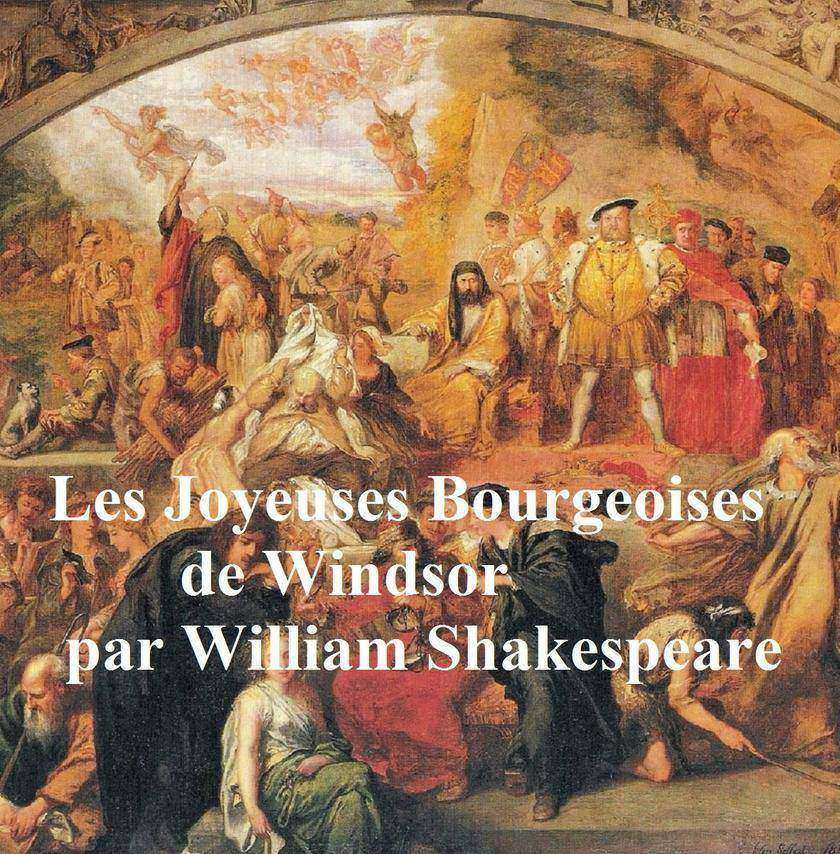
Les Joyeuses Bourgeoises de Windsor (The Merry Wives of Windsor in French)
¥8.09
Comédie Shakespeare, traduit en fran?ais. Selon Wikipedia: "The Merry Wives of Windsor est une comédie de William Shakespeare, publiée pour la première fois en 1602, mais qui aurait été écrite avant 1597. Elle présente le gros chevalier Sir John Falstaff, et est la seule pièce de Shakespeare vie contemporaine de la classe moyenne anglaise élisabéthaine. "
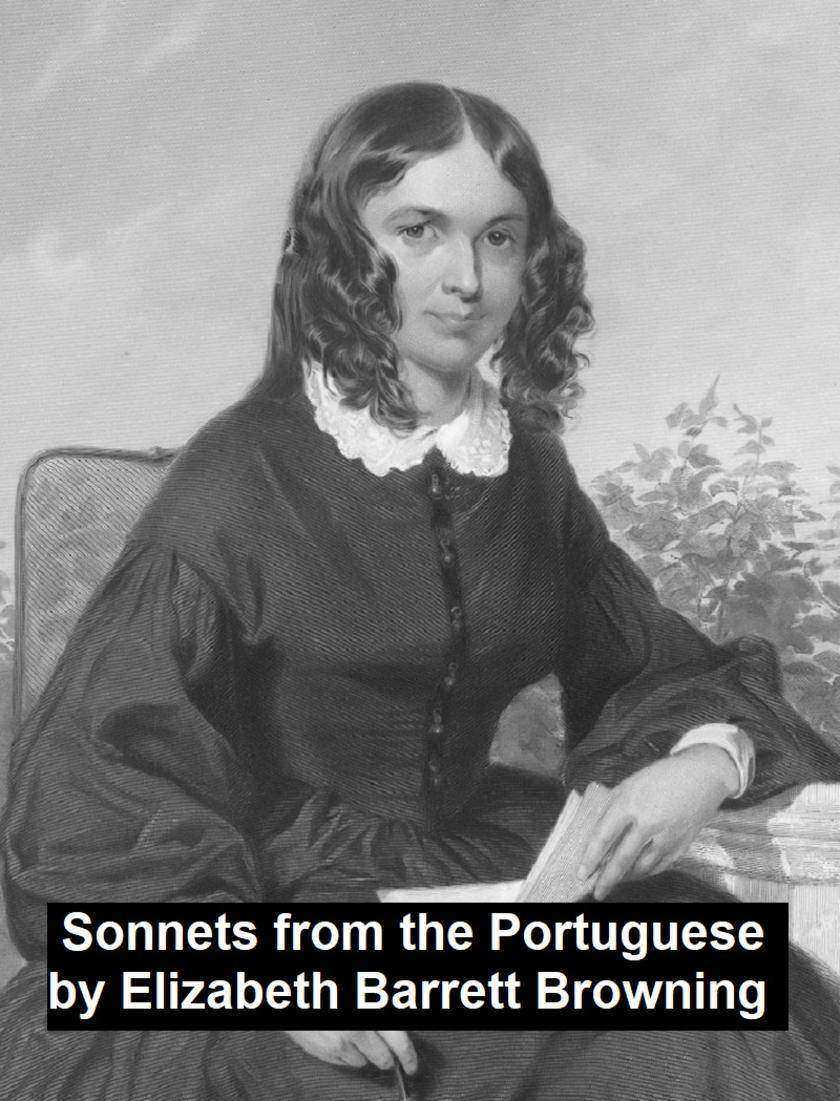
Sonnets from the Portuguese
¥8.09
Very short collection of love poems. According to Wikipedia: "Elizabeth Barrett Browning (1806 – 1861) was one of the most respected poets of the Victorian era."
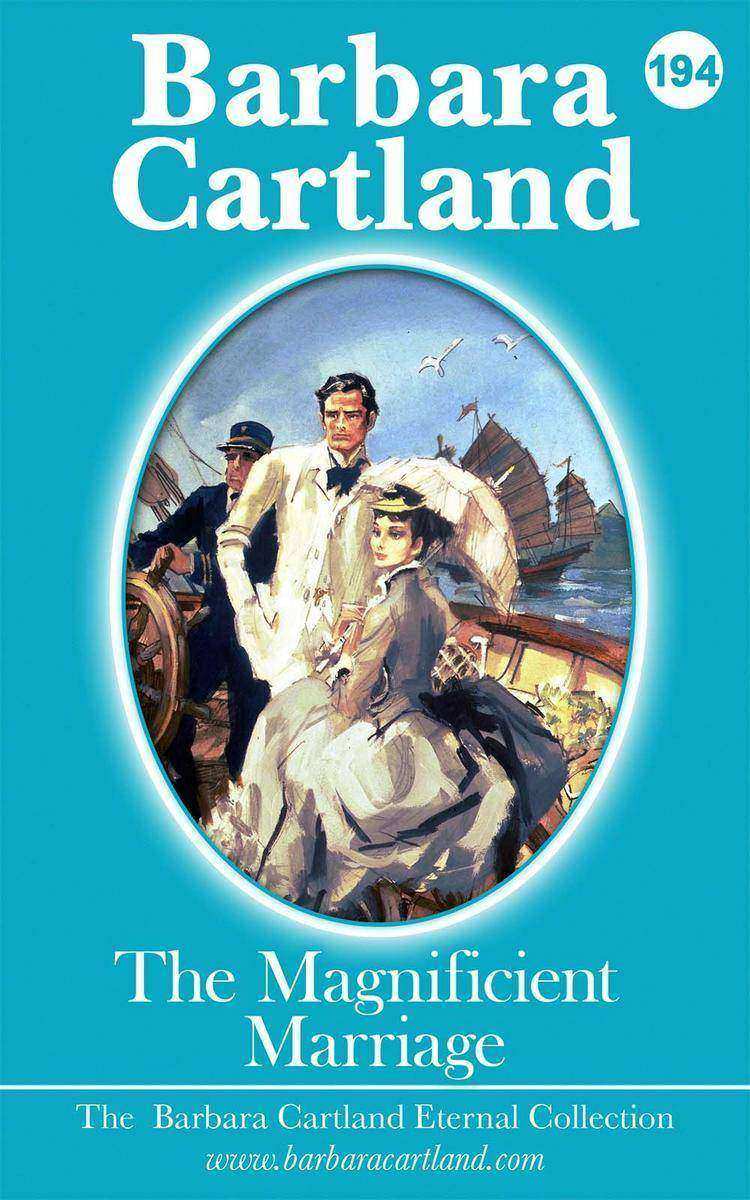
The Magnificent Marriage
¥52.32
Young Lady Lettice Burne is outstandingly beautiful with fair hair like sunshine and a flawless pink-and-white complexion. Yet her father, the Earl of Alderburne, desperate to find a wealthy suitor for her to pay off his mountain of accumulated debts, is resigned to the fact that she is immature and empty-headed and therefore unlikely to make the brilliant marriage that he had envisaged for her. So, when the handsome, dashing and rich Maximus Kirby expresses interest in her hand, the Earl is eager to send her to join him in Singapore. Maximus Kirby has been hugely successful in the Far East in trading and has started many profitable businesses that have brought unexpected prosperity to many poor communities. Lettice cannot possibly go to him in Singapore alone. So her sister Lady Dorinda goes, posing as her companion – albeit reluctantly, knowing that she is assuming her usual guise of ‘ugly sister’ thanks to the disfiguring eczema on her face and body that she has suffered from since childhood. To Dorinda’s delight and astonishment the tropical climate miraculously cures her skin complaint and now everybody can see that she is every bit as beautiful as Lettice, including Maximus Kirby. Once in Singapore Dorinda and Lettice face great dangers which Maximus Kirby and Dorinda have to defeat and Lettice becomes more and more determined that she will not marry Maximus Kirby. And will Lady Dorinda finally find the love and the ‘Magnificent Marriage’ that her disease has always denied her?

Matrimonio Fingido
¥41.86
Uno de los más apuestos y codiciados solteros de Londres, lord Melsonby se encuentra inesperadamente, atrapado en el problema de la hermosa fugitiva, Perlita Lyford, heredera de una fortuna inmensa, huérfana de madre y pierde por último, ?su progenitor, que la deja al cuidado? de una? prima hermana suya, lady Whitton. Lo que su padre no sabía, es que ella se había casado con sir Gerbold, un hombre mucho más joven que ella, y cuando lady Whitton, se murió… él vio la oportunidad de echar mano a su fortuna y de autoproclamarse su tutor. Es este hombreperverso y cruel, que Perlita huye, que solamente quiere casarse con ella, para quedarse con su dinero. Perlita, desesperada e infeliz con el destino que le esperaba, en uno de sus usuales viajes, consiguió escaparse del faetón y llegar a una modesta posada llamada La Cabeza del Rey y enseguida encuentra a lord Melsonby y le pide ayuda. Ahí, empieza un enredo fascinante, entre él y la misteriosa dama, donde se ven mezclados en una romántica aventura, ?que los conduce desde la resplandeciente sociedad victoriana, hasta una peligrosa intriga en Marruecos. Esta es una más, de las muchas obras magistrales, de la más famosa autora moderna del romanticismo, Barbara Cartland .

El Amor Siempre Vence
¥32.62
Lord Heywood regresa de las Guerras Napoleónicas para descubrir que ha heredado un patrimonio, pero no dinero. Cuando visita la propiedad, encuentra a una bella joven viviendo allí, huyendo de su hogar. Mientras está allí, está decidida a ayudarlo a encontrar un artículo valioso, que no forme parte de la propiedad para vender, ?pero por el camino, también encuentran el amor!? Instintivamente, Lord Heywood la apretó en sus brazos y la atrajo aún más cerca, y al hacerlo, se dio cuenta de que la amaba perdidamente. Cuando Miriam levantó la cara para hacer una pregunta, un rayo de luz hizo que Lord Heywood viera sus ojos asustados, su cara muy pálida y sus labios separados. Ella lo necesitaba. Nuestra heroína había estado viviendo en las habitaciones de su difunta madre y estaba decidida a descubrir quién era y por qué había vivido en una casa vacía.? A ella le gustaba el color turqués de la ropa de la cama y cuando de repente ve a lord Heywood, se queda mirándolo con recelo a su héroe. Estaba atrapada por el amor de su vida.? Una historia de intensa pasión y de incertidumbre, donde el amor al fin, siempre vence…???????????????????????
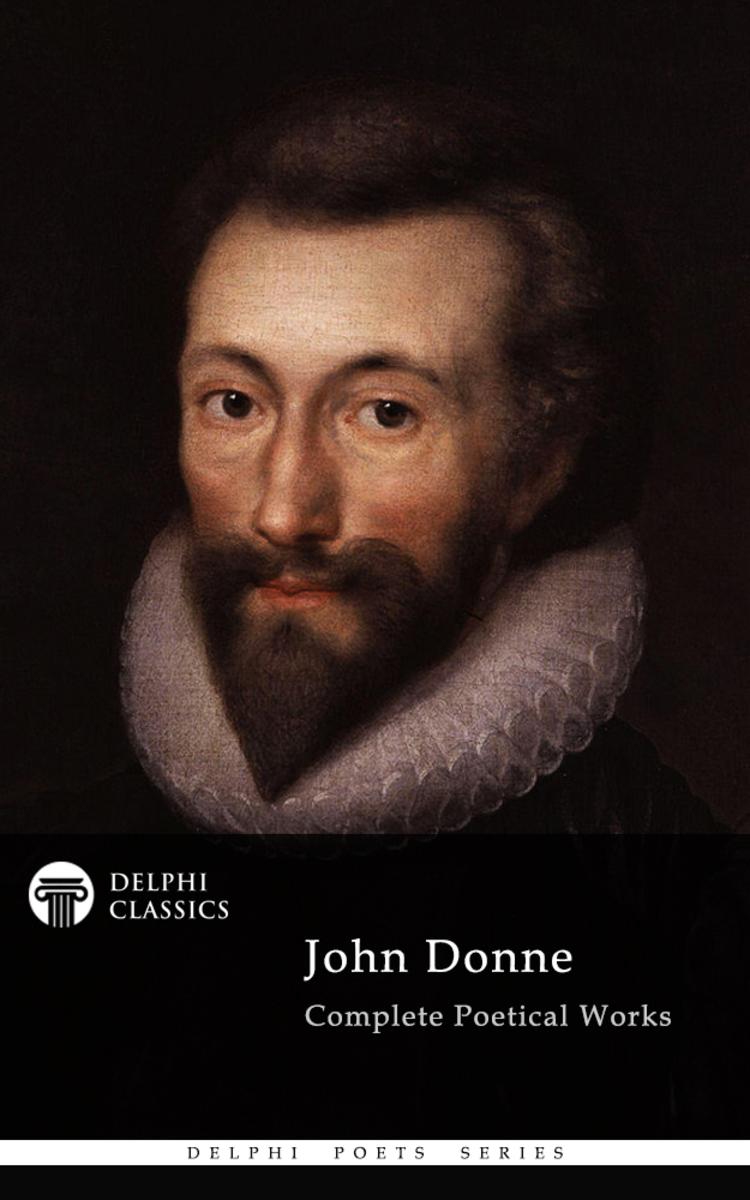
Delphi Complete Poetical Works of John Donne (Illustrated)
¥16.27
The Delphi Poets Series offers readers the works of literature's finest poets, with superior formatting. This volume presents the complete poetical works of John Donne, with beautiful illustrations and the usual Delphi bonus material. Donne's sparkling wit and imaginative conceits have delighted readers over the centuries; now you can own his entire poetical genius on your eReader! (3MB Version 1) * Beautifully illustrated with images relating to Donne's life and works * Concise introductions to the poetry and other works * Images of how the poetry books were first printed, giving your eReader a taste of the original texts * Excellent formatting of the poems * Special chronological and alphabetical contents tables for the poetry * Easily locate the poems you want to read * Almost the complete prose, with rare texts like Donnes study of suicide BIATHANATOS, appearing for the first time in digital print * Includes Donne's letters - spend hours exploring the poet's personal correspondence * Features three biographies, including Izaak Waltons famous contemporary memoir - discover Donne's literary life in detail! * Scholarly ordering of texts into chronological order and literary genres Please visit www.delphiclassics.com to browse our range of exciting titles CONTENTS: The Poetry Collections SONGS AND SONNETS ELEGIES DIVINE POEMS HOLY SONNETS OTHER DIVINE POEMS SATIRES MARRIAGE SONGS VERSE LETTERS EPICEDES AND OBSEQUIES EPIGRAMS INFINITATI SACRUM THE ANNIVERSARIES LATIN POEMS DOUBTFUL VERSES The Poems LIST OF POEMS IN CHRONOLOGICAL ORDER LIST OF POEMS IN ALPHABETICAL ORDER The Prose BIATHANATOS PSEUDO-MARTYR IGNATIUS HIS CONCLAVE DEVOTIONS UPON EMERGENT OCCASIONS PARADOXES PROBLEMS The Letters LIST OF LETTERS The Biographies THE LIFE OF DR. JOHN DONNE by Izaak Walton JOHN DONNE by Arthur Symons JOHN DONNE by Robert Lynd Please click here to browse our other titles

Jacob's Room
¥40.79
One of the best examples of Woolf's modernist innovation, the story starts in Jacob's childhood and follows him through college at Cambridge, and then into adulthood. The narrative is told mainly through the perspectives of the women in Jacob's life, including the repressed Clara Durrant and the uninhibited young art student Florinda, with whom he has an affair. His time in London forms a large part of the story, though towards the end of the novel he travels to Italy, then Greece.

Delphi Complete Works of Lewis Carroll (Illustrated)
¥24.44
Lewis Carroll was a prominent figure of the Victorian age, having not only written the Alice novels, but also varied works such as mathematical treatises, poetry and short stories. This eBook gives readers the unique opportunity of exploring Carroll’s work in a manner never before possible. This is the complete and fully illustrated literary works of Lewis Carroll, with a selection of mathematical works too. (Version 3) * illustrated with hundreds of images relating to Carroll’s life and works * annotated with concise introductions to the novels and other works * ALL the novels have their original Victorian illustrations – spend hours exploring the original Alice images and rarer images available nowhere else * the original version of ALICE’S ADVENTURES UNDER GROUND, with Carroll’s unique illustrations * includes Sir John Tenniel’s original illustrations for ALICE’S ADVENTURES IN WONDERLAND * includes rare poetry collections available in no other eBook * special alphabetical list of poems – find that special poem quickly and easily! * images of how the novels first appeared, giving your EReader a taste of the Victorian texts * includes a selection of Carroll’s mathematical works * SPECIAL BONUS section of three biographies on Carroll – explore his fascinating life in detail! * scholarly ordering of texts into chronological order and literary genres, allowing easy navigation around Carroll’s diverse oeuvre Please visit www.delphiclassics.com to browse through our range of exciting titles CONTENTS: The Novels ALICE’S ADVENTURES UNDER GROUND ALICE’S ADVENTURES IN WONDERLAND THROUGH THE LOOKING-GLASS SYLVIE AND BRUNO SYLVIE AND BRUNO CONCLUDED The Short Stories A TANGLED TALE BRUNO’S REVENGE AND OTHER STORIES WHAT THE TORTOISE SAID TO ACHILLES The Poetry Collections EARLY VERSE PROLOGUES TO PLAYS COLLEGE RHYMES AND NOTES PHANTASMAGORIA AND OTHER POEMS THE HUNTING OF THE SNARK THREE SUNSETS AND OTHER POEMS PUZZLES FROM WONDERLAND ACROSTICS, INSCRIPTIONS AND OTHER VERSES The Poems LIST OF POEMS IN ALPHABETICAL ORDER Selected Mathematical Works SYMBOLIC LOGIC THE GAME OF LOGIC THE ALPHABET CIPHER FEEDING THE MIND The Biographies LIFE AND LETTERS OF L.CARROLL BY S.D.COLLINGWOOD LEWIS CARROLL IN WONDERLAND BY BELLE MOSES THE STORY OF LEWIS CARROLL BY ISA BOWMAN Please visit www.delphiclassics.com to browse through our range of exciting titles
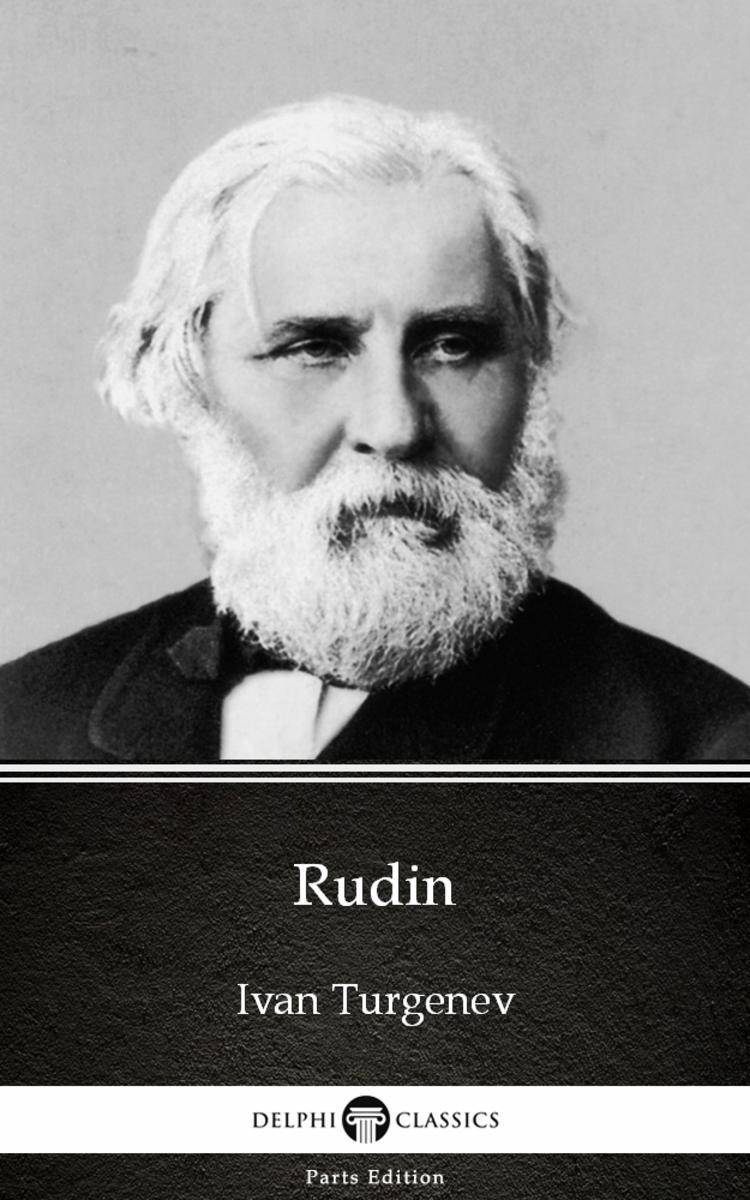
Rudin by Ivan Turgenev - Delphi Classics (Illustrated)
¥8.09
This eBook features the unabridged text of ‘Rudin by Ivan Turgenev - Delphi Classics (Illustrated)’ from the bestselling edition of ‘The Collected Works of Ivan Turgenev’. Having established their name as the leading publisher of classic literature and art, Delphi Classics produce publications that are individually crafted with superior formatting, while introducing many rare texts for the first time in digital print. The Delphi Classics edition of Turgenev includes original annotations and illustrations relating to the life and works of the author, as well as individual tables of contents, allowing you to navigate eBooks quickly and easily. eBook features: * The complete unabridged text of ‘Rudin by Ivan Turgenev - Delphi Classics (Illustrated)’ * Beautifully illustrated with images related to Turgenev’s works * Individual contents table, allowing easy navigation around the eBook * Excellent formatting of the text Please visit www.delphiclassics.com to learn more about our wide range of titles




 购物车
购物车 个人中心
个人中心



